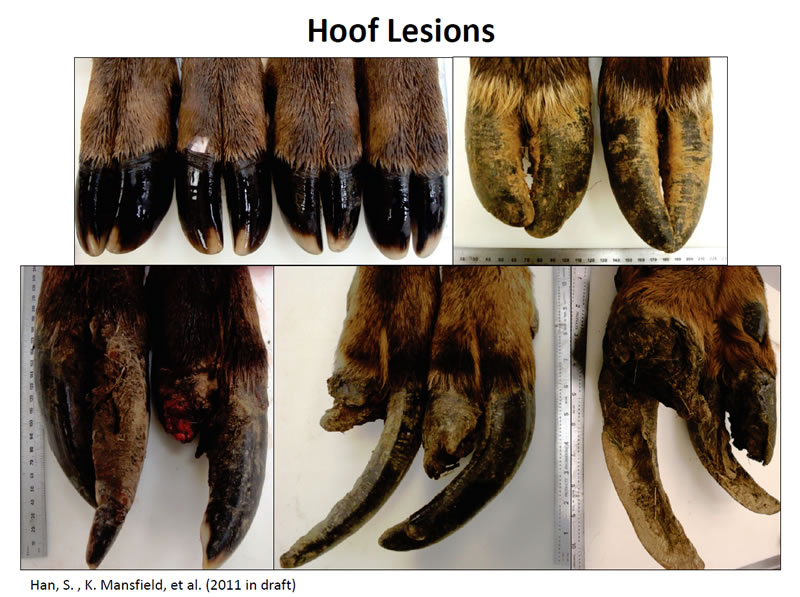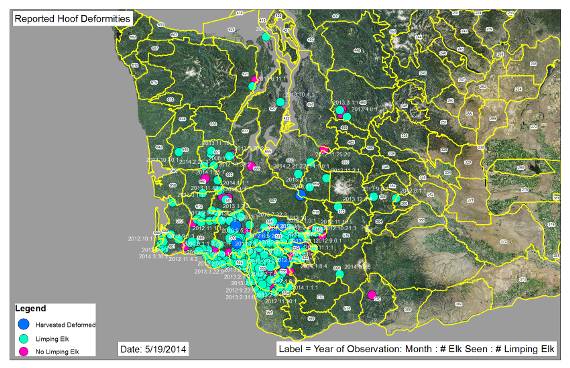Elk Hoof Disease is a relatively new farming problem for livestock farmers that can affect the health of livestock including goats, cattle and sheep. Although sightings of limping elk have increased, the reported diseased elk and other animals are located in parts of Oregon and Washington State.
Here are the facts about Elk Rot:
What is Elk Hoof Disease?
Elk Hoof Disease, also known as Treponeme associated hoof disease, is a bacterial disease known to cause abnormalities on the hooves of elk and other farm animals creating broken, missing or deformed foot pads. Digital dermatitis has not been found to harm humans; but it has plagued the livestock industry for decades. Nothing has been documented in elk or wildlife - until recent years.

Photo from Washington Department of Fish and Wildlife
What We Know
Biologists believe that the bacteria likely persists in moist soil where infected farm animals roam. Herbicides and pesticides were once believed to cause the elk hoof rot; but there is no scientific evidence to suggest this is the reason.
Sandra Jonker is a state wildlife program manager based in Vancouver, Washington. She says biologists are still wrestling with how the disease spreads and how to contain it.
"We've all come to the realization that once hoof disease is in the herd and on the landscape, (it is) extremely difficult to eliminate,” Jonker said. “The challenge is really how do we manage the disease."
Where are the Infected Animals?
Sightings of 'limp elk' were reported in the late 1990s along the Cowlitz River Basin. Since 2008, reported sightings have increased to 10 counties in Southwest Washington, affecting both the Mount St. Helen and Willapa Hills elk herds. In 2014, there were 16 confirmed cases of the Hoof Disease in Oregon elk.

Photo from Washington Friends of Farms and Forests Website.
Digital Dermatitis in Livestock
The hoof disease has affected sheep, goats and cattle since 1974. In the United States, the disease is the leading cause of lameness in dairy cows, occurring in 70 percent of the nation's dairies and is responsible for 50 percent of lameness in cows. The good news? The disease does not contaminate the livestock animal's meat or organs - that we have heard.
Treating Elk Hoof Disease
Currently, there isn't a vaccine to treat the crippling hoof disease and researchers have yet to find other proven methods for curing the deformities.
Elk Management Strategies
Deerbusters suggests installing elk and large animal fencing around properties and farms to protect livestock from traveling elk.
